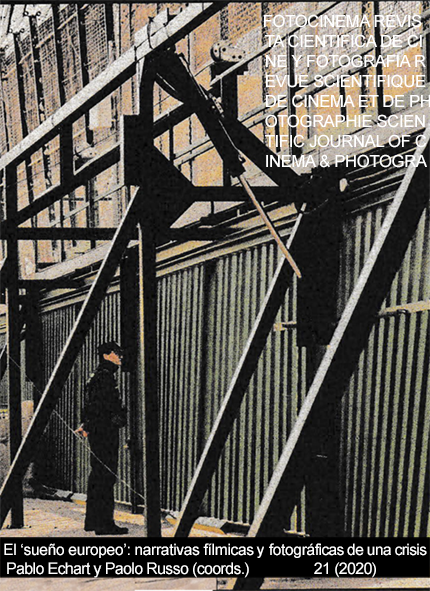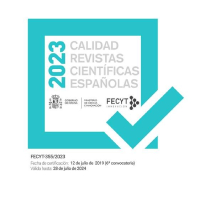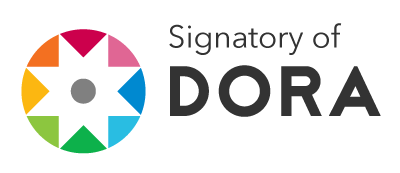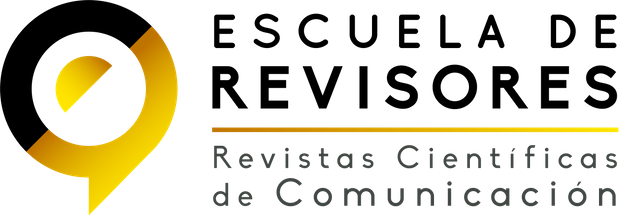El “sueño europeo”: narrativas fílmicas y fotográficas de una crisis
DOI:
https://doi.org/10.24310/Fotocinema.2020.vi21.9992Keywords:
European Dream, Common European Home, refugees and migrantsAbstract
This monographic issue of Fotocinema aims to delve into how the arts and audiovisual media reflect on the idea of ??Europe as a “Common Home”, on the deep crisis that it is experiencing today, and on the main challenges and problems it currently faces if it is to make its own regeneration and survival possible once again.
Downloads
Metrics
References
Bauman, Z. (2016). Extraños llamando a la puerta. Barcelona: Paidós. Berlant, L. (2011). Cruel Optimism. Durham (NC) and London: Duke University Press.
Hermsen, J. J. (2019). La melancolía en tiempos de incertidumbre. Madrid: Siruela.
Kovacsics, V. (2018). Ya no se puede volver a casa. Caimán cuadernos de cine, Especial nº 18 [32], 6-9.
Lakoff, G. and Johnson, M. (1980). Metaphors We Live By. Chicago: University of Chicago Press.
Liz, M. (2016). Euro-Visions. Europe in Contemporary Cinema. Nueva York: Bloombury Academics.
Lorey, I. (2016). Estado de inseguridad. Gobernar la precariedad. Madrid: Traficantes de sueños.
Magris, C. (2020). Occidente, víctima de su propia vileza. El Mundo, 13 de marzo, 36-37.
Nichols, B. (1997). La representación de la realidad. Cuestiones y conceptos sobre el documental. Barcelona: Paidós.
Peris Cancio, J. A. (2018) ¿Qué puede enseñarnos el Hollywood clásico sobre la acogida a los refugiados y los desplazados? Una lectura filosófica de Si no amaneciera (1941) de Mitchell Leisen. Archivos de la Filmoteca, nº 75, 19-42.
Sánchez-Escalonilla, A. (2019). La crisis del sueño europeo: hogar y éxodo en el nuevo cine sobre migrantes y refugiados (2005-2018). Revista de Comunicación, 18 (1), 277-297.
Young, J. E. (1992). The Counter-Monument. Memory against Itself in Germany Today”. Critical Inquiry, 18 (2), 267-296.
Downloads
Published
How to Cite
Issue
Section
License
All contents published in Fotocinema Revista científica de cine y fotografía are protected under the Creative Commons Attribution-NonCommercial-ShareAlike 4.0 International (CC BY-NC-SA 4.0) license. All about this license is available in the following link: <http://creativecommons.org/licenses/by-nc-sa/4.0>
Users can copy, use, redistribute, share and exhibit publicly as long as:
- The original source and authorship of the material are cited (Journal, Publisher and URL of the work).
- It is not used for comercial purposes.
- The existence of the license and its especifications are mentioned.
There are two sets of authors’ rights: moral and property rights. Moral rights are perpetual prerogatives, unrenounceable, not-transferable, unalienable, imprescriptible and inembargable. According to authors’ rights legislation, Fotocinema. Revista científica de cine y fotografía recognizes and respects authors moral rights, as well as the ownership of property rights, which will be transferred to University of Malaga in open access. The property rights are referred to the benefits that are gained by the use or the dissemination of works. Fotocinema. Revista científica de cine y fotografía is published in an open access form and it is exclusively licenced by any means for doing or authorising distribution, dissemination, reproduction, , adaptation, translation or arrangement of works.
Authors are responsable for obtaining the necessary permission to use copyrighted images.













13.png)



